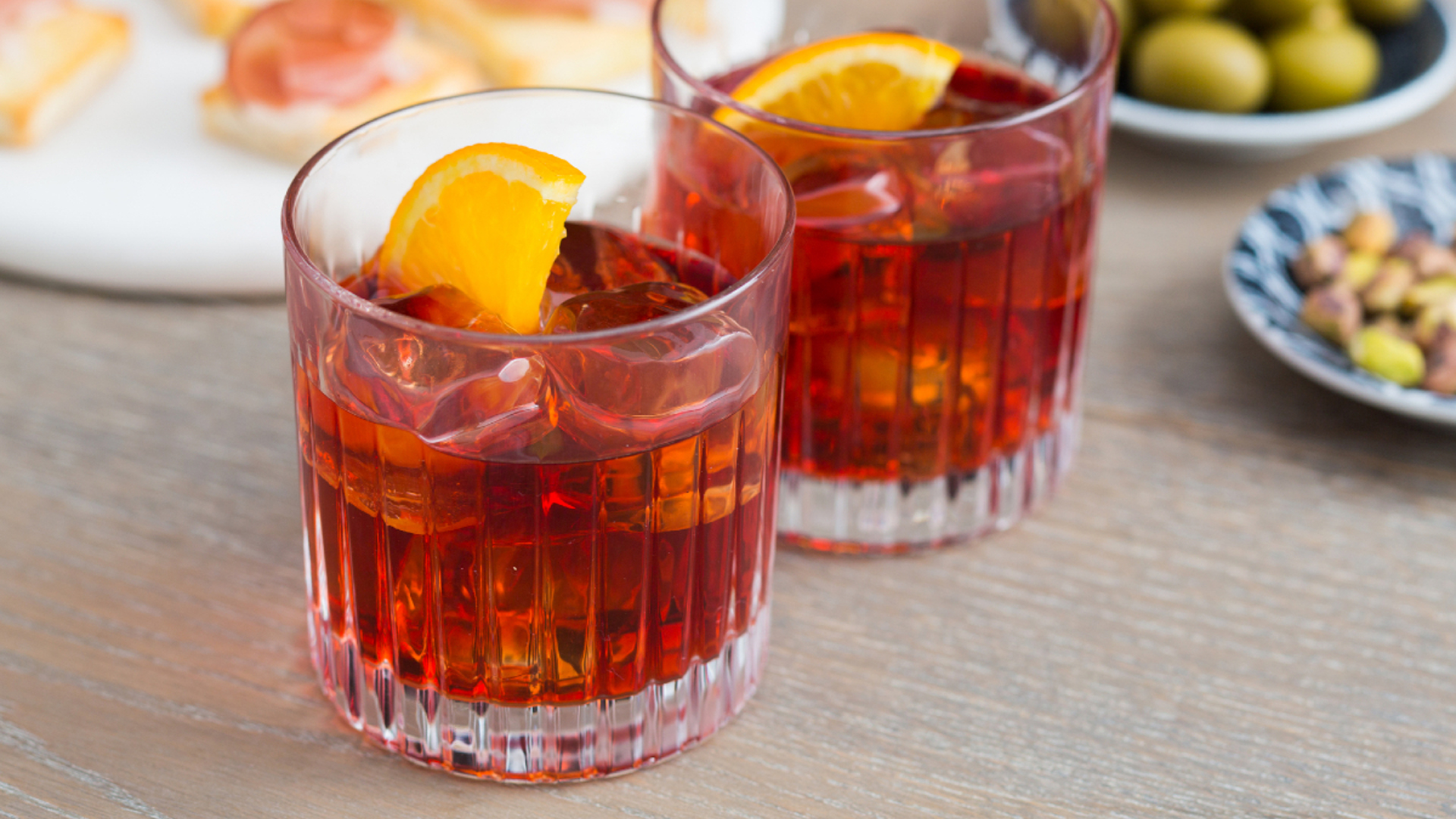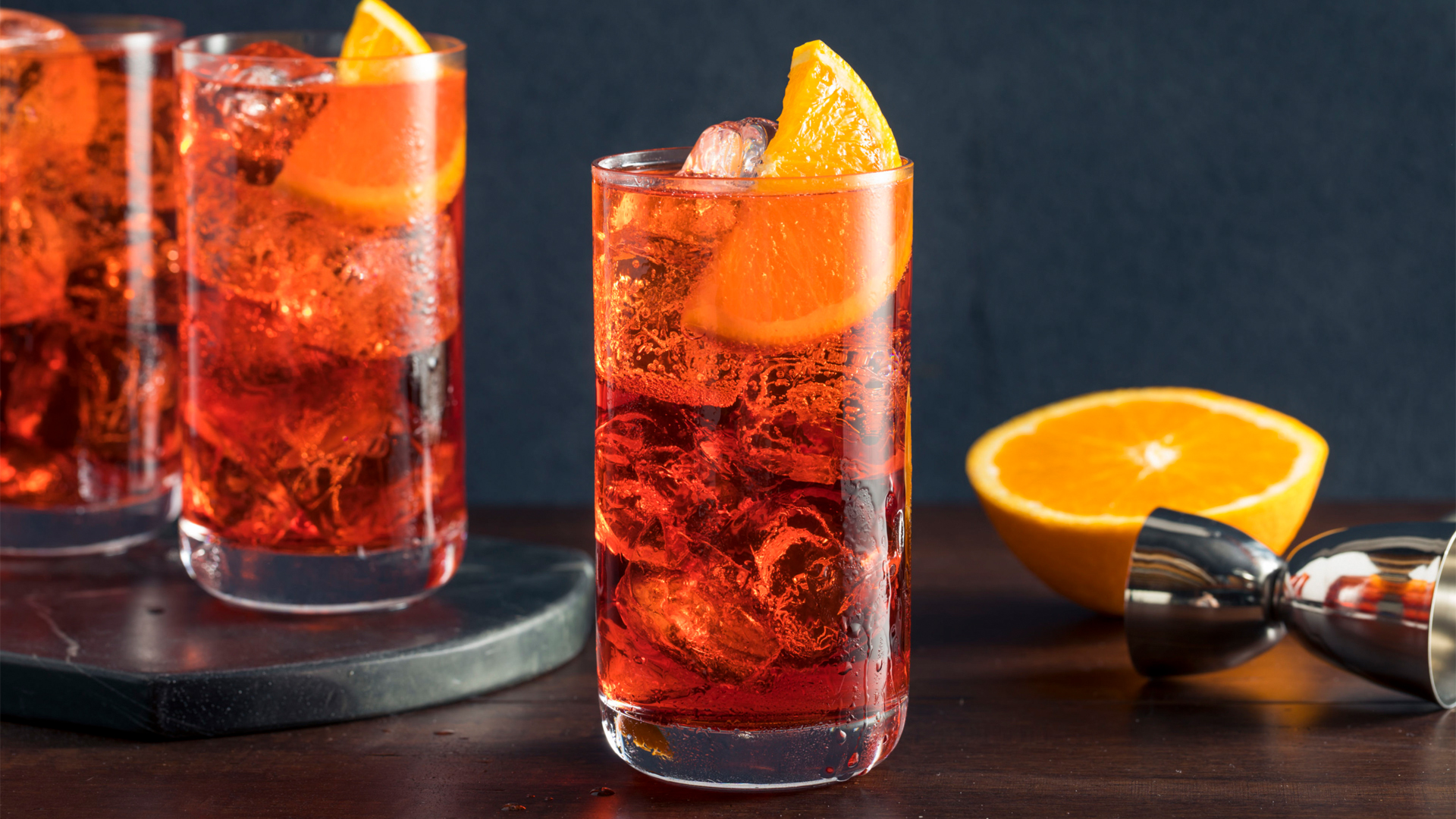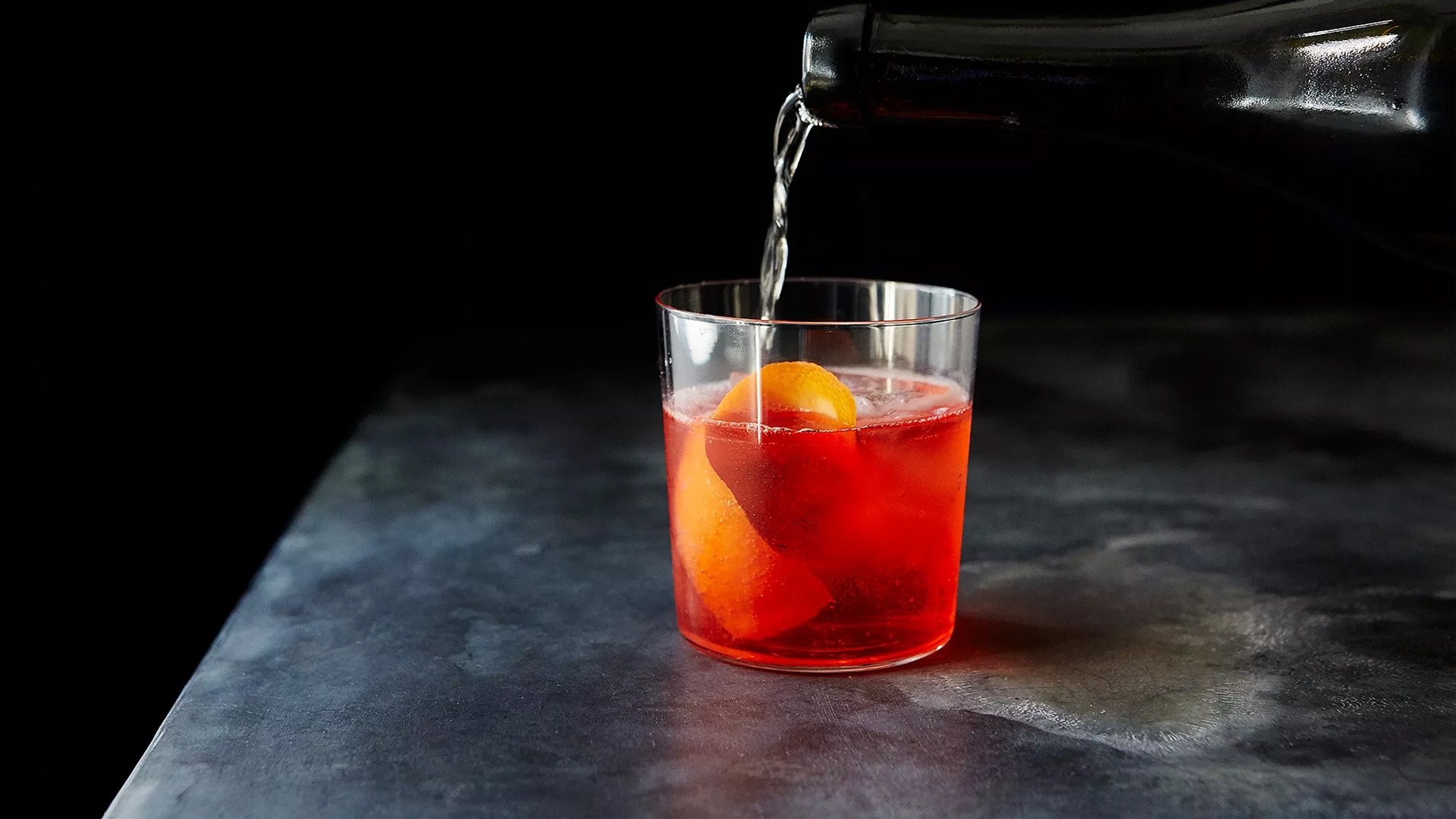Derived from the Latin verb aperire, meaning "to open", an aperitivo is a refreshing, palate-opening libation that traditionally kicks off an Italian meal offered with antipasti. The flavor profiles of aperitivi range from bitter-sweet and herbaceous to lightly sweet. Besides setting the scene for a convivial gathering, classic Italian aperitivi are fuss-free, and you can create them with budget-friendly ingredients that you may already have on hand. What follows are recipes for our favorite aperitivi, including Aperol Spritz —excellent for when you're in the mood to "pick up your feet'' after work, the Bellini, as well as three variations of the Negroni: classic, the original, the Americano, and a "Sparkling" Negroni.
Cin Cin!
APEROL SPRITZ

An amaro (meaning “bitter”) is a still spirit infused with Italian regional herbs, fruits, and bark, which gives them an herbaceous, bitter-leaning flavor profile. The amaro Aperol was created and introduced in 1919 by Luigi and Silvio Barbieri, brothers from Padua. Later, in the 1950s, the Aperol Spritz ⎯named for the German word for “spray”⎯ became a favorite aperitivo in Northern Italy. The formula for an Aperol Spritz is three parts bubbles, two parts Aperol, and one part club soda. On the spectrum of amaro, Aperol is sweeter, with notes of orange and rhubarb. Swap it out with Cappelletti amaro or Campari for a spritz with a bend toward bitter.
Fill a large wine glass with ice, add the Prosecco, the Aperol, and soda, and stir. Garnish with the orange slice.
BELLINI

Serves 6
Giuseppe Cipriani of Harry's Bar created the Bellini in Venice in 1947. A favorite haunt of artists from around the world, patrons of Harry's, spread their love for his concoction of peach puree blended with Prosecco. Soon, it became synonymous with the glow of summer and celebrations. Cipriani's original recipe included a touch of raspberry puree for a gorgeous deep color. To make the Rossini, a sweeter, strawberry version of the Bellini, swap out the peaches and raspberries for ½ pound of cleaned and hulled fresh strawberries.
Add the peaches, raspberries, and ¼ cup water, or more, if necessary, to a blender, and puree. Divide the fruit puree among six champagne glasses, then slowly pour Prosecco into each glass, gently stirring to combine.
NEGRONI

Serves 1
The Negroni, created in 1919, is named for Count Camillo Negroni. Legend has it that Camillo asked his bartender to replace the soda water in an Americano aperitivo with gin, giving rise to his more potent namesake drink. While the Negroni is one part gin, one part vermouth Rosso, and one part Campari, we couldn't resist offering you three handy variations: the classic Count's Negroni, the tamer Americano, and the light and effervescent "Sparkling" Negroni.
Fill a rocks glass with ice, add the gin, Vermouth, and Campari and stir. Garnish with the orange slice.
THE AMERICANO

Fill a rocks glass with ice, add the Vermouth and Campari and stir. Top with a splash of soda, and garnish with the orange slice.
THE “SPARKLING” NEGRONI

Fill a rocks glass with ice, add the Vermouth and Campari and stir. Top with the Prosecco, and garnish with the orange slice.
Theresa Gambacorta
Theresa Gambacorta is a writer and cookbook co-author. Her writing has appeared in such titles as La Cucina Italiana, Spin Magazine, Men's Fitness, Muscle and Fitness, and Centennial's special interest publications. She is the co-author of chef Joey Campanaro's Big Love Cooking (Chronicle, 2020), chef Nasim Alikhani's Sofreh (Knopf, 2023), and the forthcoming vegan cookbook, Eat What Elephants Eat by activist Dominick Thompson (Simon Element, 2024).


